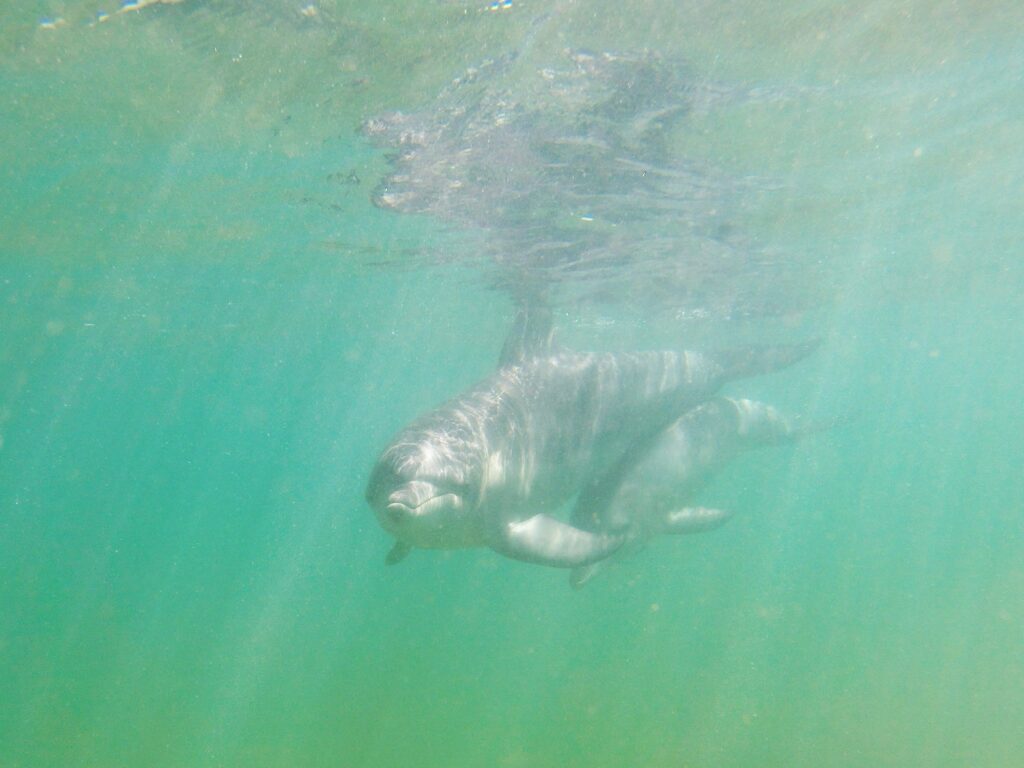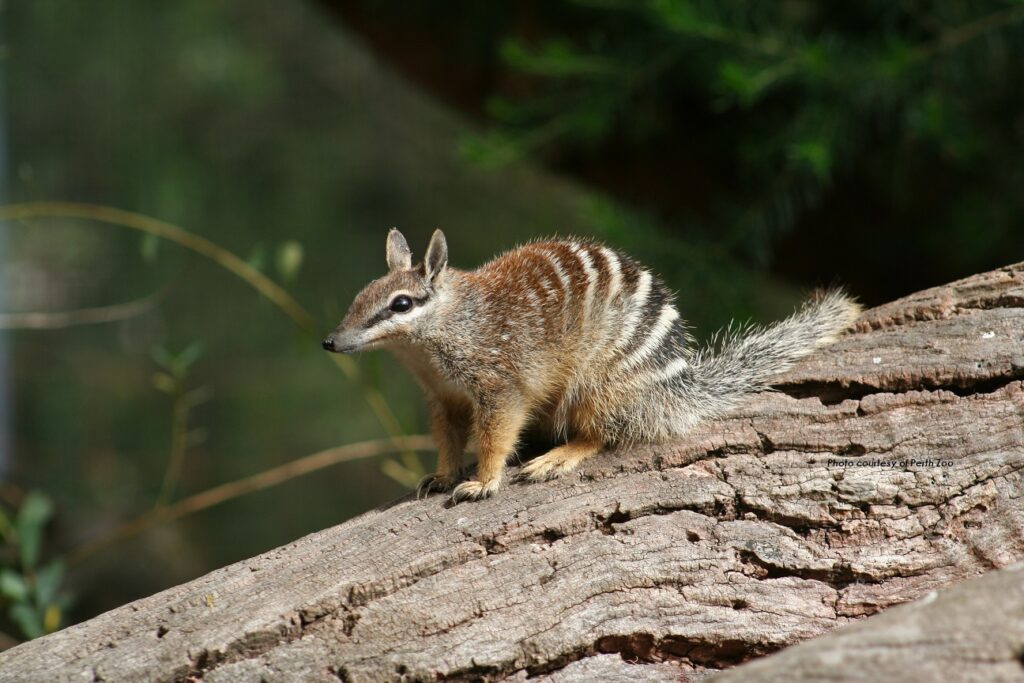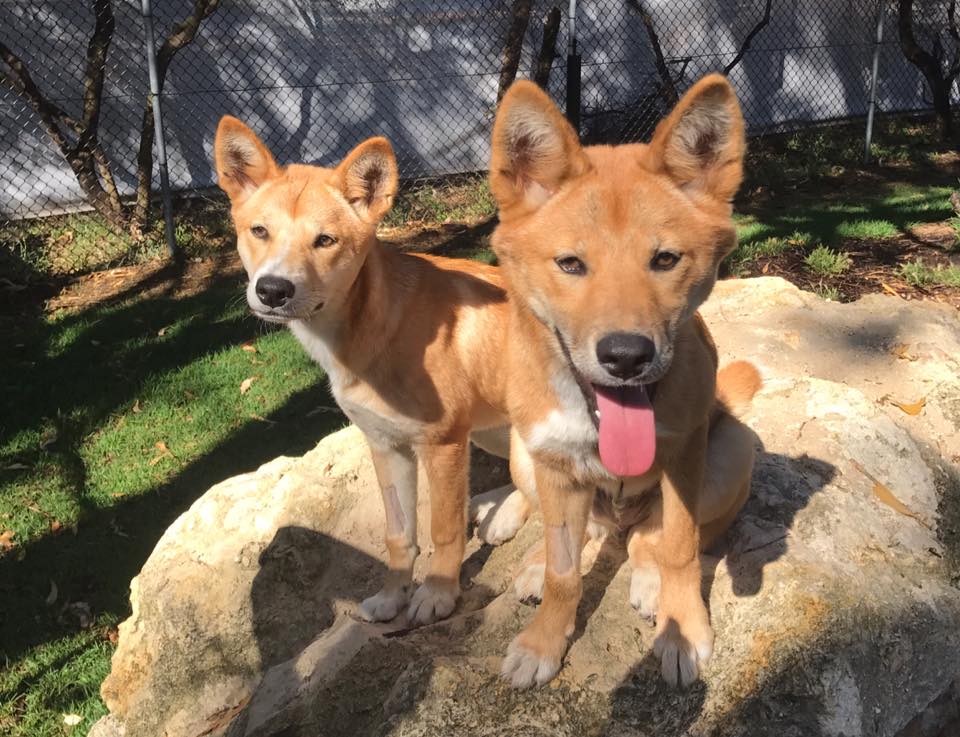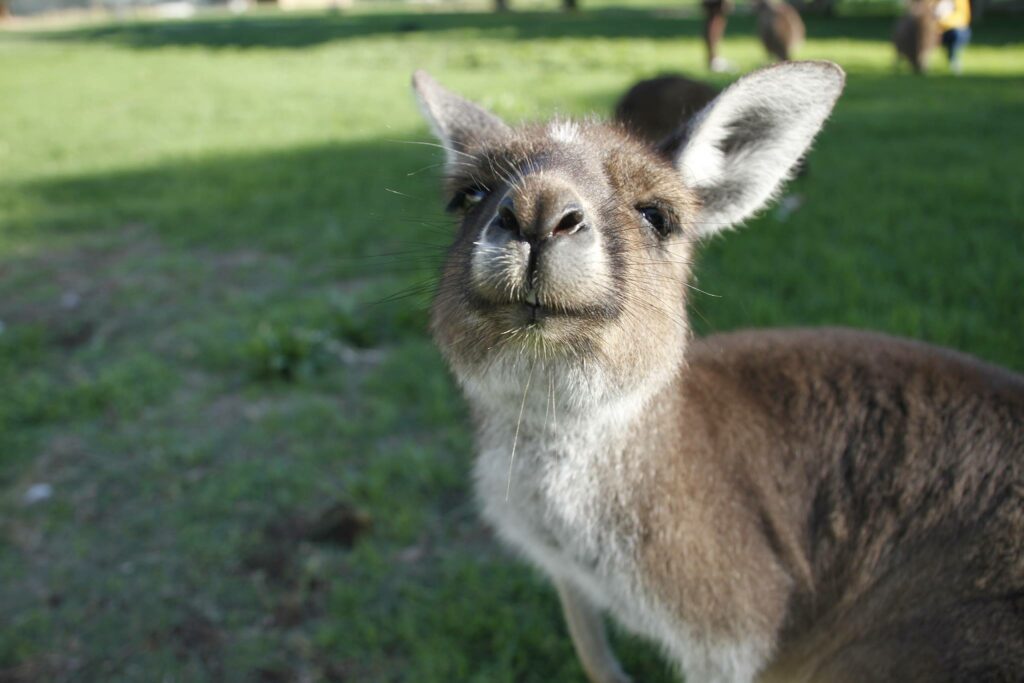BunGeo is a natural haven for Western Australian wildlife and encounters with these creatures are an almost inevitable feature of travels around the region.
Meet our Big 5.

Koombana Bay is home to a large population of bottlenose dolphins and serves as a resting area and breeding ground. A group of around 100 to 150 dolphins is regularly seen in the bay and surrounding waters. Approximately 20 to 40 of these are considered residents of Koombana Bay, and there is a group of five or six dolphins that regularly visit the public interaction zone, with as many as 16 dolphins known to have visited at any one time. Join the team at the Dolphin Discovery Centre for an intimate swim with wild dolphins in their natural environment. Accompanied by an experienced guide and trained volunteers you will venture into the open waters of Koombana Bay. Depending on dolphin sightings you will be guided into the water where the dolphins may elect to initiate interaction with the swimmers. As they are wild dolphin interaction cannot be guaranteed. If you’re not keen on getting wet, take a 1.5 hour Dolphin Eco Cruise within Koombana Bay. The vessel provides an excellent viewing platform designed to get you as close as possible to the dolphins so you can say ‘hi to flipper’.
Within the Tuart Forest National Park, you are highly likely to see the rare western ringtail possum and the more common brushtail possum. The western ringtail possum (Pseudocheirus occidentalis) is a small to medium sized leaf-eating arboreal marsupial. It is recognised as a threatened species under State and Commonwealth legislation. Western ringtail possums are very shy, nocturnal and only found in the south-west of Western Australia.

An emblem animal of Western Australia, the endangered Numbat is Australia’s equivalent of a meerkat. The numbat (Myrmecobius fasciatus), also known as the banded anteater, marsupial anteater, or walpurti, is a marsupial that survives on a diet of termites. Once widespread across southern Australia, its range is now restricted to several small colonies, such as Perup Nature Reserve. Perup Nature’s Guesthouse, in the heart of the reserve, is one of the best places in the South West to see numbats,plus ringtail and brushtail possums, quenda, woylies and chuditch.

Meet Kaal (Noongar for fire) and his sister Merrick (Noongar for enchantment), brother and sister dingoes that steal the limelight at Bunbury Wildlife Park. Arriving as pups in 2017, they are a part of a breeding program to protect this ancient, vulnerable Australian native animal. Did you know that unlike domestic dogs, dingoes don’t usually have an odour? This is an evolutionary quirk which helps prevent their prey smelling them when they are hunting.

Not rare, but we do have some of the most friendly and selfie-mad kangaroos in Western Australia. At Bunbury Wildlife Park you can score a guaranteed Red or Western Grey kangaroo interaction. Get up close with this Aussie icon, especially those with a bag of animal feed! They love human company and this is a great spot to take a seat and observe these unique creatures as they bounce around. If you prefer something more on the wildside, head to Wellington Forrest Wine, Food and Cottages. The wild but tame kangaroos are never far away and enjoy a go selfie too.
Copyright © 2025 Visit Bunbury Geographe | All Rights Reserved
Site designed by Jack in the Box & built by Pixel Smith Studio




